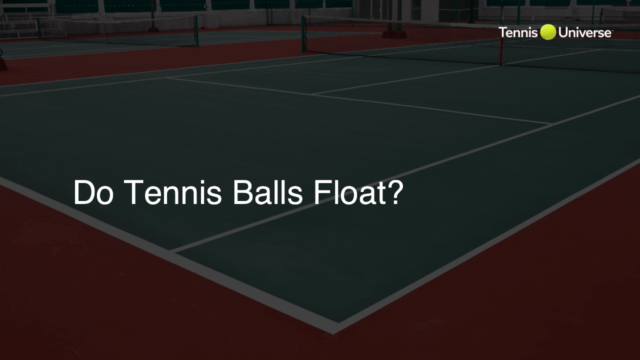A volley in tennis is a shot where the player strikes the ball before it bounces on the court. Generally executed near the net, volleys involve quick reflexes and precise timing. Skilled volleyers aim to put pressure on opponents and shorten the points by taking away their reaction time.
Understanding the Volley in Tennis
In the game of tennis, a volley is an essential shot that players execute effectively as part of a winning strategy. It’s a shot where the player strikes the ball before it bounces on the court, typically near the net.
Types of Volleys
Forehand Volley
The forehand volley involves using the dominant side of the body to hit the ball, ensuring a quick yet controlled stroke. The player’s tennis racket should be held at a slight angle, and the arm movement should be minimal to execute a precise volley.
Backhand Volley
The backhand volley is performed on the non-dominant side of the body. It requires a player to have a firm tennis racket grip, maintaining the same angle as in a forehand volley. The key to successful backhand volleys is proper footwork and using the legs for added power.
Benefits of Learning to Volley
Mastering the volley can offer numerous advantages to the tennis player:
- Shorten Points: Volleys allow players to finish points quickly, conserving energy and putting pressure on the opponent.
- Offensive Positioning: By taking control near the net, players force opponents into a defensive position, limiting their shot options.
- Mixed Styles: Having a strong volley game complements a solid baseline game, making a player less predictable and harder to defeat.
Tips to Improve Your Volley Technique
Hold the Tennis Racket Correctly
A firm and stable grip on the tennis racket is essential for both forehand and backhand volleys. Experiment with different grip sizes and styles to find the most comfortable option for you.
Focus on Footwork
Proper footwork is critical for successful volleys. Stay on the balls of your feet, maintain a low center of gravity, and split-step to react quickly to incoming shots.
Control and Placement
Instead of focusing solely on power, prioritize control and accurate shot placement. A well-placed volley can outwit opponents and lead to winning points.
The Different Volley Situations in Tennis
While volleys are typically associated with the net, players may encounter various volleying situations on the court. Here are some common scenarios:
Midcourt Volley
Midcourt volleys occur when a player intercepts a ball closer to the service line. These shots often require additional power, as the player must cover a larger distance to hit the ball back.
Swinging Volley
A swinging volley involves striking the ball with more of a topspin groundstroke motion, rather than the traditional volley technique. Players often use this shot when approaching the net on a weaker, higher ball from an opponent.
Drop Volley
The drop volley is a delicate shot, gently hit just over the net so that it barely drops on the other side. Executing a successful drop volley requires a soft touch, making it difficult for an opponent to reach and return the ball.
Tennis Tips for Effective Volleying
To develop a strong and consistent volley game, follow these tennis tips:
- Practice Drills: A variety of volley drills and exercises can help players improve their technique and reflexes.
- Stay Relaxed: Keep your arm and wrist relaxed during the volleying motion, allowing for better control and contact.
- Communicate: In doubles play, communication is crucial. Work with your partner to develop strategies and coordinate movements to optimize your combined volley abilities.
- Watch the Pros: Observe professional players’ volley techniques and try to adopt their best practices in your own game.
Mastering the Serve-and-Volley Technique
The serve-and-volley is a classic tennis tactic, enabling players to transition quickly from their service motion to a volley at the net. This aggressive method puts immense pressure on opponents, reducing their response time and forcing them to hit harder, more precise shots.
By incorporating these tennis tips, practicing various types of volleys, and studying the strategies employed by professional players, you can work towards expanding your tennis arsenal, becoming a more challenging and versatile opponent on the court.
FAQs Related to Volleys in Tennis
If you still have questions after reading our blog post, we’ve compiled a list of frequently asked questions and their answers to help you better understand the concept of volleys in tennis.
What is the correct grip for a volley?
The correct grip for a volley is the continental grip, suitable for both forehand and backhand volleys. It allows for a neutral racket face angle, enabling you to hit a variety of volley shots efficiently.
Why is footwork so important in volleying?
Footwork is crucial in volleying because it helps players maintain proper balance, react quickly to incoming shots, and generate controlled power. Good footwork allows for better positioning and effective execution of a variety of volley shots near the net.
How can I improve my volley reaction time?
To improve your volley reaction time, practice volley-specific drills focused on enhancing reflexes, hand-eye coordination, and anticipation. Ensuring proper footwork, staying on the balls of your feet, and keeping a low center of gravity will also help improve reaction time when volleying.
How can I integrate volleys into my overall tennis game?
Integrating volleys into your overall tennis game involves developing your net skills through practice and adopting tactics that enable you to transition from baseline to net play. Strategies such as the serve-and-volley and chip-and-charge can help you incorporate more volleys into your game plan.
Are volleys more effective in singles or doubles play?
Volleys can be effective in both singles and doubles play, but their impact can be even greater in doubles due to the nature of the game. With two players covering the court, executing strong volleys can put additional pressure on the opponents and create more openings for winning shots.












